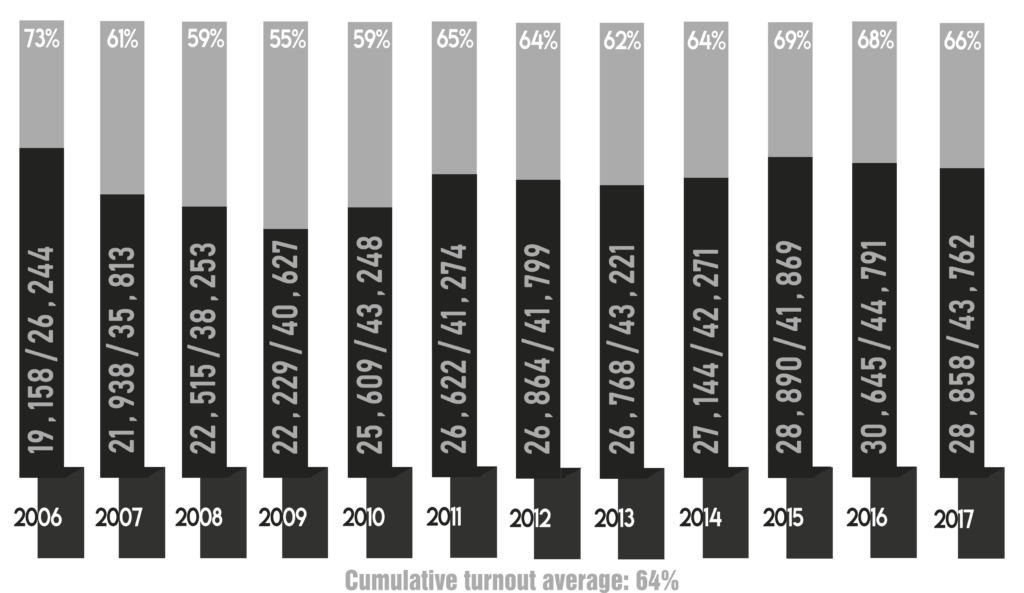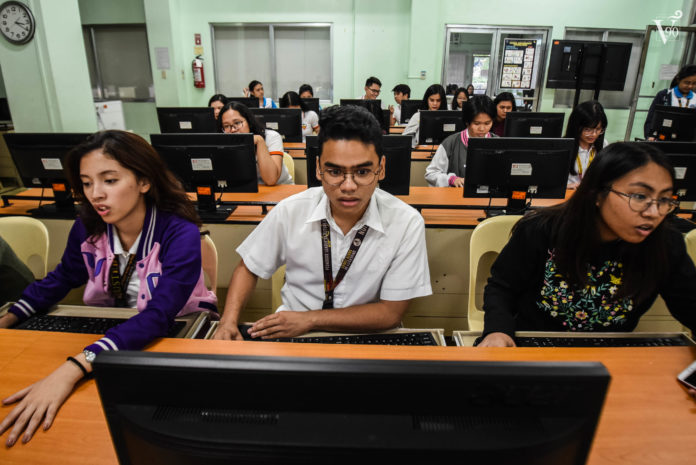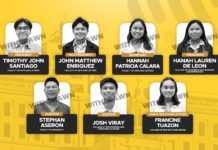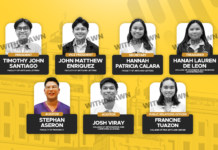WITH the return to electronic voting, the UST Central Commission on Elections (Comelec) is now eyeing a record-high turnout of votes atop the implementation of a longer voting period this academic year.
In a press conference last March 9, the poll body announced that the election period will be on April 11 to 21, significantly longer compared to the four-day voting period held in previous years, to beat the 73-percent voter turnout recorded in 2006.
Comelec Chairman Arvin Bersonda said he expects all local Comelec units to strictly follow election schedules per class to make sure all Thomasians get to cast their votes.
“Since the computer laboratories are being used for academic purposes, we [are] trying our best to maximize the use of it through proper scheduling,” Bersonda told the Varsitarian.
 After the switch to manual voting last year, the 2017 voter turnout dropped by 2.9 percent when only 66 percent of the voting body or 28, 873 out of 43,762 Thomasians were able to cast their votes from 30,645 out of 41, 869 or 68 percent in 2016.
After the switch to manual voting last year, the 2017 voter turnout dropped by 2.9 percent when only 66 percent of the voting body or 28, 873 out of 43,762 Thomasians were able to cast their votes from 30,645 out of 41, 869 or 68 percent in 2016.
Faculty of Arts and Letters Comelec Chairwoman Ayla-Rhey Salapare said the “convenient” nature of electronic ballots may boost this year’s voter turnout.
“The electronic elections will be more convenient for all of us… Instead of finishing two to three blocks in an hour, we are hoping to finish five or more [and] when this happens, the total voter turnout will increase,” Salapare said.
In last year’s student polls, UST Education High School obtained the highest voter turnout at 94.9 percent, followed by UST Senior High School with 93 percent and the Faculty of Pharmacy and College of Commerce and Business Administration with 85 percent apiece.
The colleges with the lowest voter turnouts are the Conservatory of Music with 43.7 percent followed by the College of Fine Arts and Design (CFAD) with 56 percent.
For the last ten years, the lowest automated student council voter turnout recorded was in 2009 (55 percent) while the highest was in 2006 (73 percent).
The lowest voter turnouts were recorded during the first three years of electronic election in 2008 (59 percent), 2009 (55 percent), and 2010 (59 percent).
Voter information programs ‘adequate’
Salapare added that proper dissemination of instructions on the new automated voting system may also increase student participation in the student polls.
“I believe students will participate if we will properly disseminate information regarding the new system of voting,” Salapare said.
To boost voter information, Comelec has partnered with media organizations for a ‘more effective’ information campaign. The poll body also decided to boost its social media campaign to improve voter knowledge among the electorate.
“We used social media to release videos, gif photos (moving pictures), para maging mas maalam po ang mga tao sa unibersidad,” Comelec Secretary to the Executive Julius Berame told the Varsitarian.
Faculty of Pharmacy Comelec Chairman Anthony Marzan said their Comelec unit constantly reminds their students on their election schedules.
“Aside from the constant reminders we give to students regarding their election schedule, active student participation is also one of the reasons why our voter turnout remains high every year,” Marzan said.
CFAD Comelec Chairwoman Alexis Tan said she will coordinate with block presidents to schedule the best time for classes to vote.
“We will be coordinating with the [CFAD] league of presidents to be able to schedule the best time for their respective classes to vote,” Tan said.
Scrapping abstain ‘may discourage’ voting
Salapare said majority of local Comelecs fear that due to the removal of abstain, which the Central Comelec argued was justifiable by the University Student Election Code (USEC), will discourage students from casting their votes.
“Most of the students I have spoken with were reluctant to participate in this year’s student elections because they felt that they had no choice but to vote for the people running in the respective faculties, colleges, and institutes,” Salapare said.
She, however, said the absence of “abstain” in the ballot would not “remove the rights of the students” to vote for their chosen candidates.
“It simply means that we cannot recognize abstain as an entity since there is no clear definition of the term in the USEC,” she said.
In a resolution released last July 24, 2017, the Central Judiciary Board (CJB) ordered Comelec to proclaim candidates earning the highest number of voters and disregard the “abstain” option in the ballots, citing violations of provisions in the USEC.
Lakas Tomasino Coalition’s Steven Grecia, Gabriela Sepulchre, Daveson Nieto and Richard Javier, who were proclaimed on Aug. 25 as president, vice president, treasurer and auditor, respectively, immediately resigned.
To comply with the CJB’s order, Comelec decided to forego the use of abstain for this year’s ballots.
Voter turnout in this year’s polls may also decrease because of apathy among the electorate and unanswered ballots, said Berame.
“’Yung root ng lower voter turnout is either indifference or ‘yung wala pong pakialam yung mga tao,” Berame said. “Or yung mga tao, they think voting is not worth it or the present candidate is not worth [of their votes],” he said.
“We cannot force students to choose. I think [unanswered ballots] will affect the mindset of people na, kung hindi naman natin gusto, bakit tayo pipili and it will lower the voter turnout,” he added.
Failure to reach the voter turnout quota of 25 percent will result in a declaration of failure of elections, according to the USEC. with L.C.L. Penera and reports from Pauline Faye V. Tria











